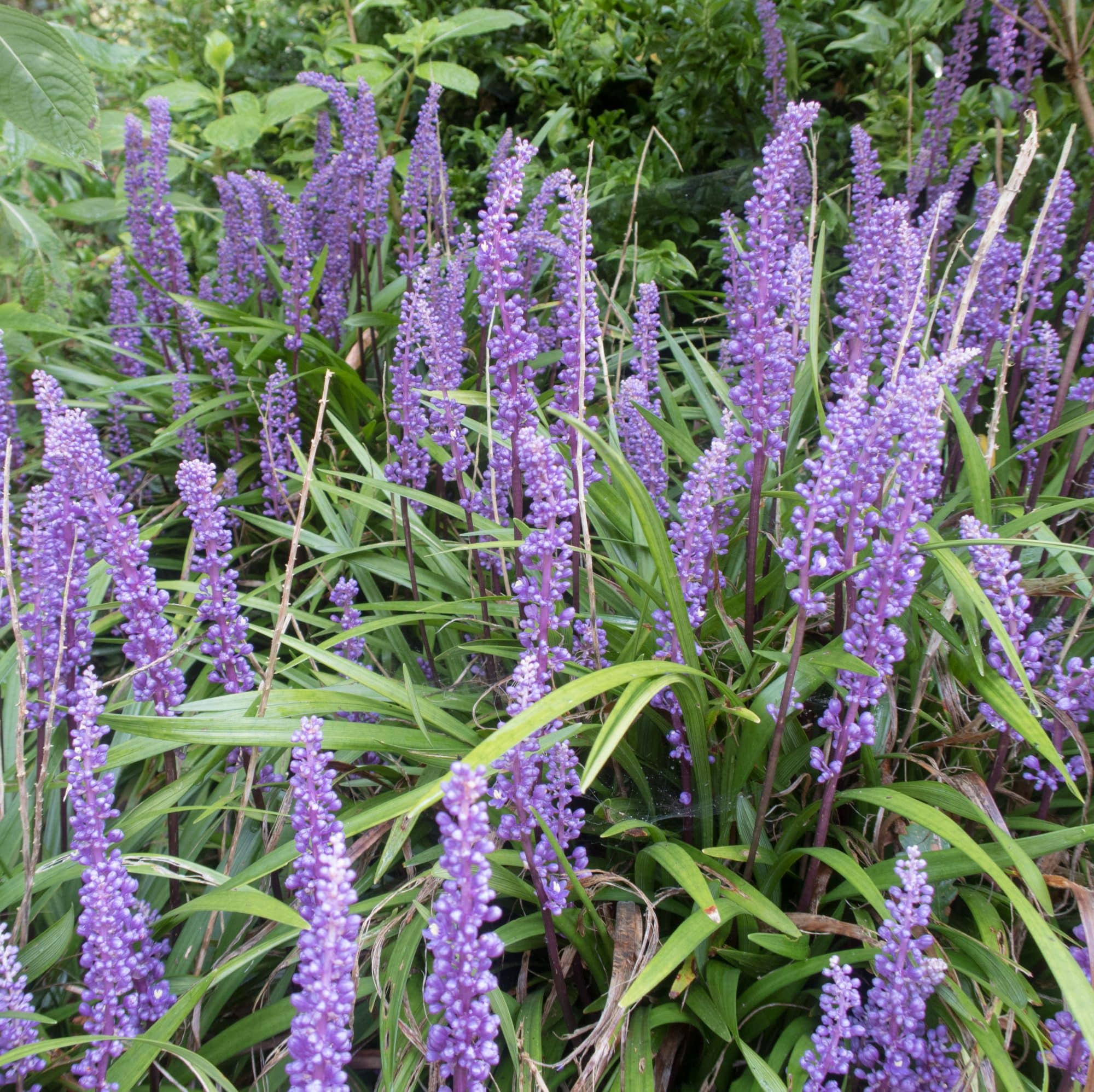The Big Blue Liriope plant, renowned for its captivating blue flowers and graceful foliage, is a true gem in the gardening world. This low-maintenance perennial offers a myriad of benefits and applications, making it a popular choice for both novice and experienced gardeners alike.
Its hardiness, adaptability, and aesthetic appeal have earned it a place in gardens across the globe. Whether used as a border plant, groundcover, or mass planting, the Big Blue Liriope adds a touch of elegance and charm to any landscape.
Big Blue Liriope Plant Description

The Big Blue Liriope, scientifically classified as Liriope muscari ‘Big Blue’, is a captivating evergreen perennial that adds beauty and elegance to landscapes. Its striking foliage and showy flower spikes make it a popular choice for gardeners and landscapers alike.
This robust plant typically reaches a height of 18-24 inches, with a spread of around 12-18 inches. Its long, narrow leaves are a deep, glossy green color, forming a dense clump that provides year-round interest. The leaves are linear, with parallel veins running lengthwise, giving them a distinctive grass-like appearance.
Hardiness Zones and Growing Conditions
The Big Blue Liriope thrives in hardiness zones 4 to 10, making it adaptable to a wide range of climates. It prefers well-drained soil that is rich in organic matter and slightly acidic to neutral in pH. This versatile plant can tolerate a range of light conditions, from full sun to partial shade, but it produces the most abundant blooms when grown in full sun.
In terms of water requirements, the Big Blue Liriope is relatively drought-tolerant once established. It generally prefers regular watering during the growing season, especially during hot, dry spells. However, it is important to avoid overwatering, as this can lead to root rot.
Big Blue Liriope Plant Care and Maintenance

The Big Blue Liriope plant is a low-maintenance perennial that thrives in a wide range of conditions. Here are some tips on how to care for this beautiful plant:
Watering
Water the Big Blue Liriope plant deeply and regularly, especially during the hot summer months. Allow the soil to dry out slightly between waterings.
Fertilizing, Big blue liriope plant
Fertilize the Big Blue Liriope plant in the spring and fall with a balanced fertilizer. Follow the directions on the fertilizer package for the correct application rate.
Pruning
Prune the Big Blue Liriope plant in the spring to remove any dead or damaged leaves. You can also cut back the flower stalks after they have finished blooming.
Propagation
The Big Blue Liriope plant can be propagated through division or seed. To divide the plant, simply dig it up and divide it into smaller sections. To propagate by seed, sow the seeds in a well-drained potting mix and keep them moist. The seeds will germinate in 2-3 weeks.
Pests and Diseases
The Big Blue Liriope plant is generally resistant to pests and diseases. However, it can be susceptible to mealybugs, aphids, and scale. To control these pests, spray the plant with a horticultural oil or insecticidal soap.
Big Blue Liriope Plant Uses and Benefits

The Big Blue Liriope plant is a versatile and attractive addition to any landscape. It is commonly used as a border plant, groundcover, or in mass plantings. Its dense, evergreen foliage and striking blue flowers make it a popular choice for both residential and commercial landscapes.
In addition to its aesthetic appeal, the Big Blue Liriope plant also offers a number of benefits. It is a low-maintenance plant that is drought tolerant and easy to care for. It is also a good choice for attracting pollinators to the garden.
Incorporating the Big Blue Liriope Plant into Different Garden Designs and Styles
The Big Blue Liriope plant is a versatile plant that can be incorporated into a variety of garden designs and styles. It is a good choice for both formal and informal gardens, and it can be used to create a variety of effects.
- In formal gardens, the Big Blue Liriope plant can be used to create borders, hedges, or topiaries.
- In informal gardens, it can be used as a groundcover, or it can be planted in mass plantings to create a dramatic effect.
- The Big Blue Liriope plant can also be used to create a variety of container gardens.